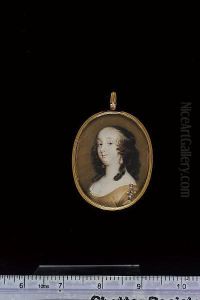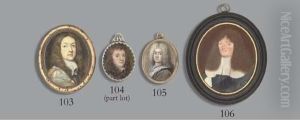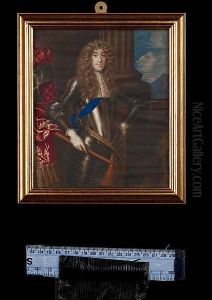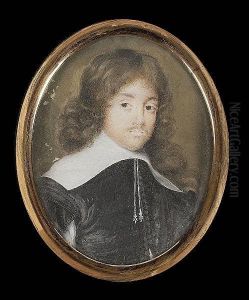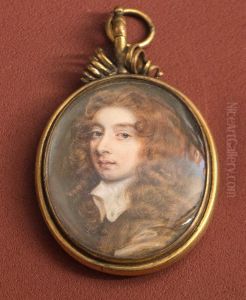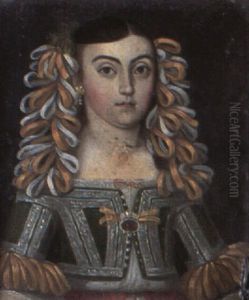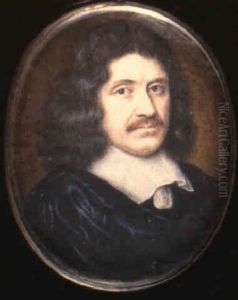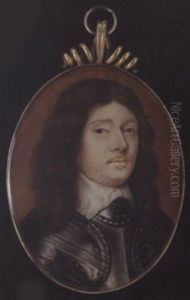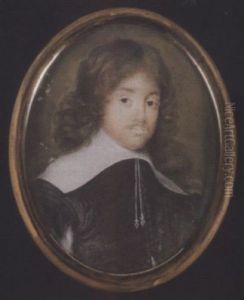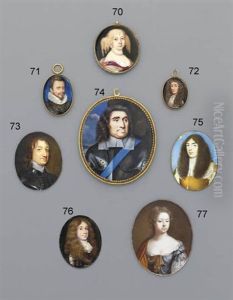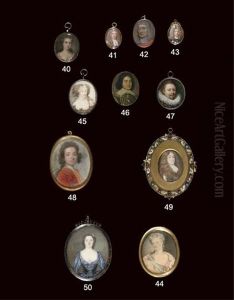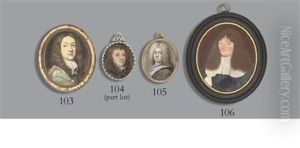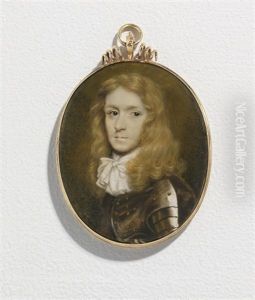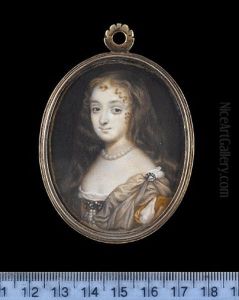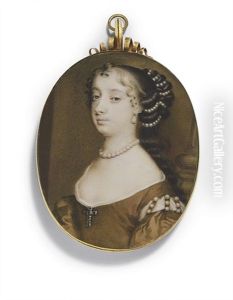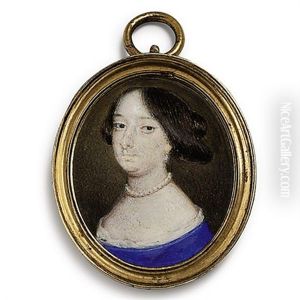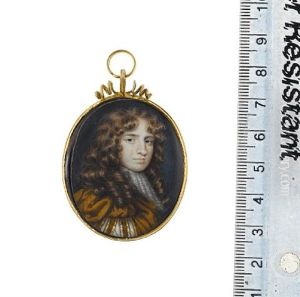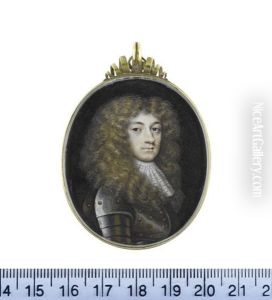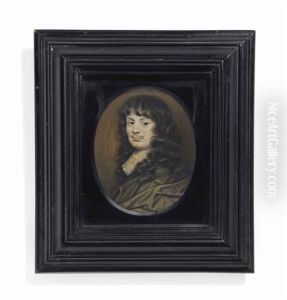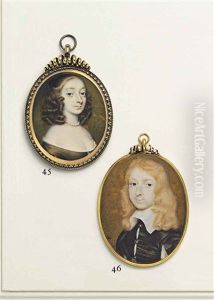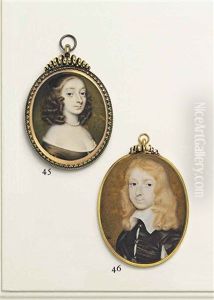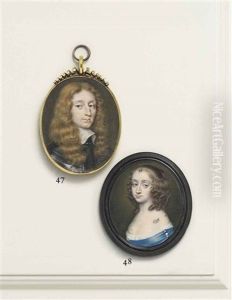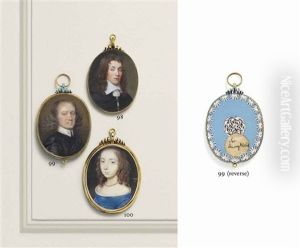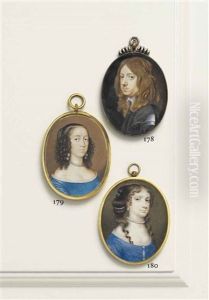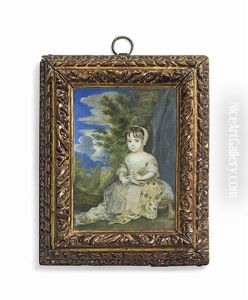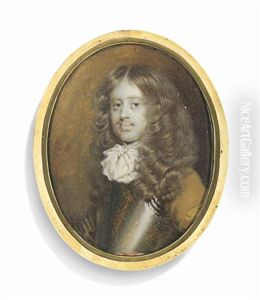Richard Gibson Paintings
Richard Gibson, often referred to as 'Dwarf Gibson', was an English miniature painter born in 1615. Despite his small stature due to dwarfism, he became a prominent court painter and a favorite in the court of King Charles I. Despite being less known today, during his lifetime, he was a significant figure in the realm of portrait miniatures, a popular art form in the 17th century which involved painting highly detailed and small portraits, often used as personal mementoes or tokens of affection.
Gibson was initially trained by a patroness who recognized his talent early on. His skill eventually reached the ears of the court, and he was taken under the wing of Francis Cleyn, a court painter, where he honed his craft. He later became associated with another famous miniature painter of the time, Sir Peter Lely, who was the Principal Painter to Charles II.
Gibson's life intersected with the English Civil War, which had an impact on his patrons and the courtly life that sustained his career. Nevertheless, he navigated these tumultuous times and continued to work. His paintings were known for their delicacy and precision, qualities that were highly prized in miniature portraiture.
In his personal life, Richard Gibson married another person of short stature, Anne Shepherd, who was also a painter. They had nine children, three of whom also became painters. This suggests that Gibson not only left a mark as an artist but also passed on his artistic legacy to the next generation.
Gibson died in 1690, and while he might not be as widely recognized now as some of his contemporaries, he remains a fascinating figure in the history of art, particularly in the context of court painters and the tradition of miniature painting.
